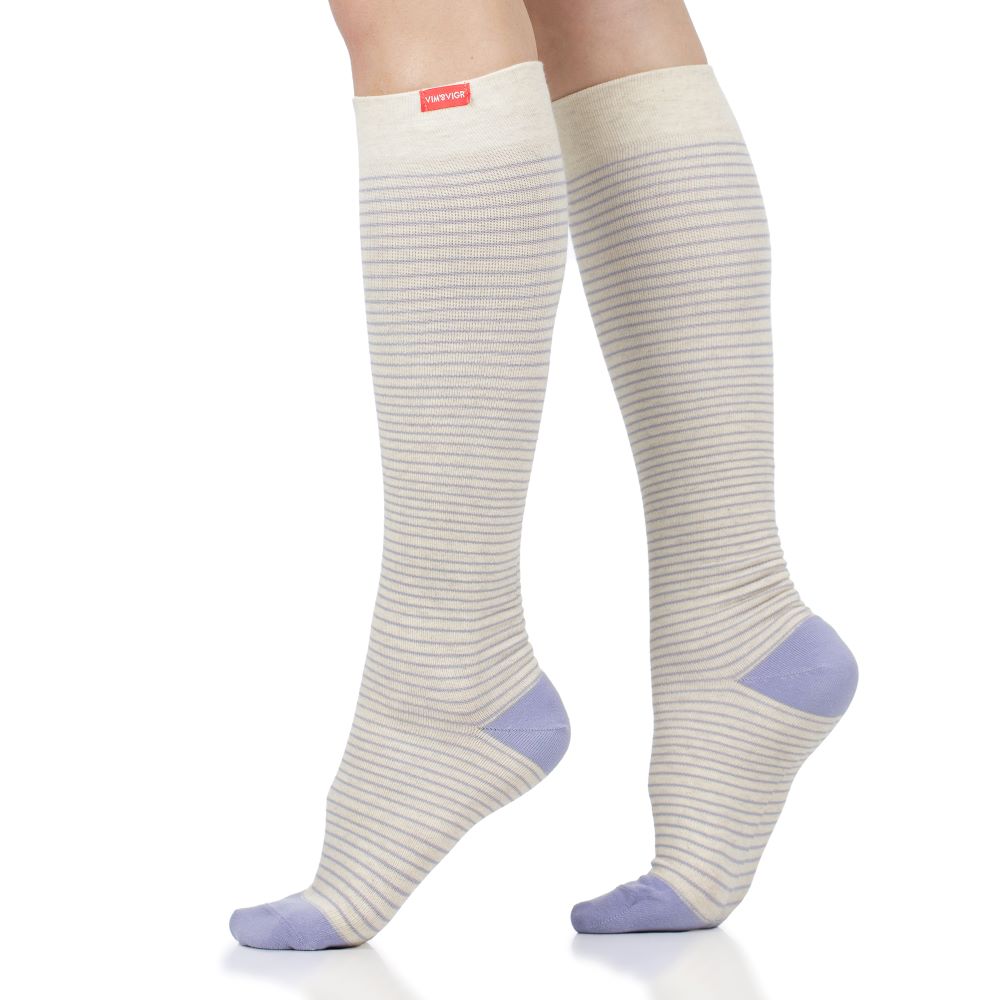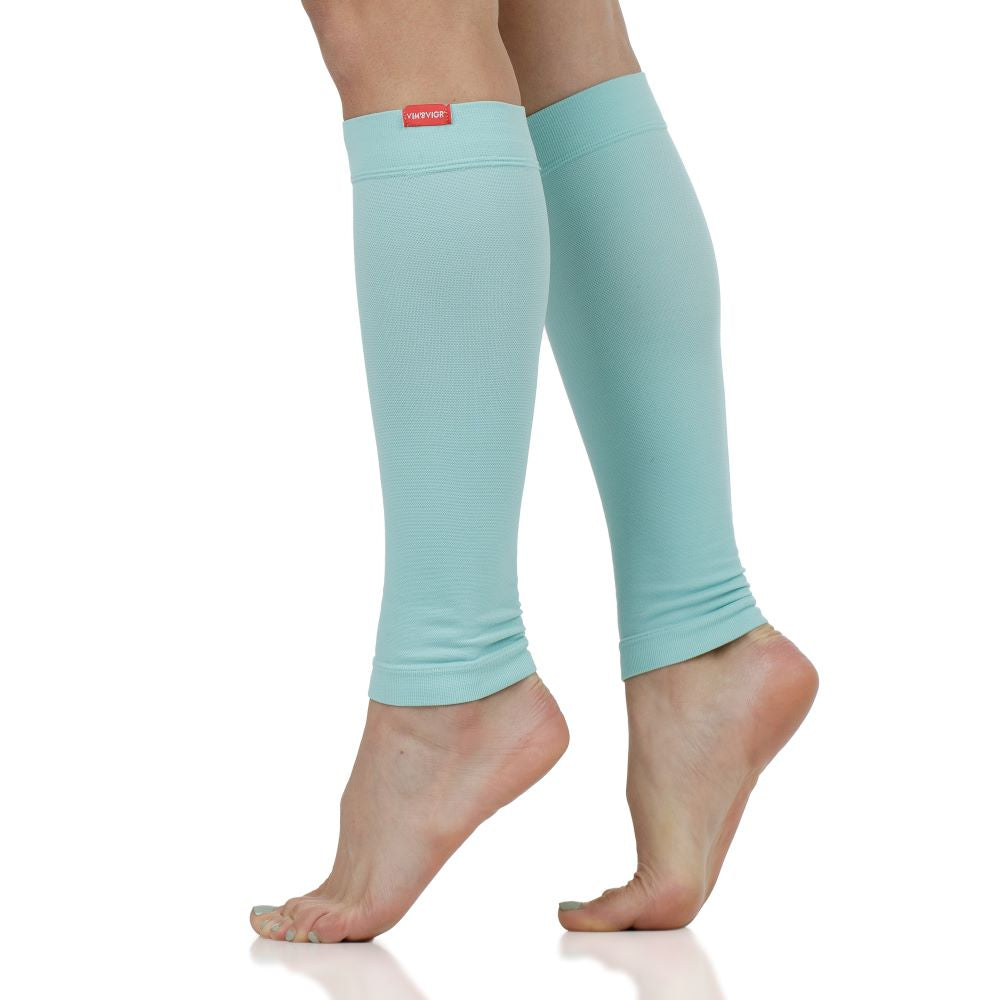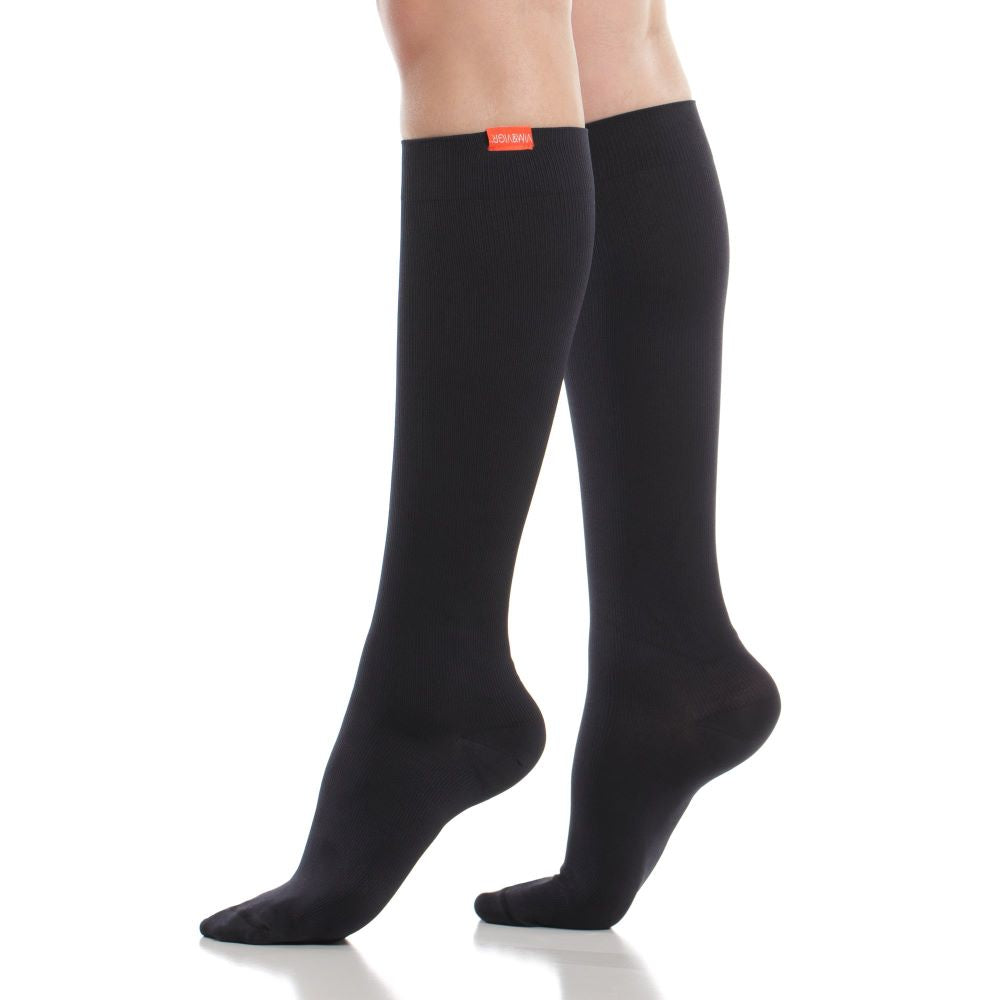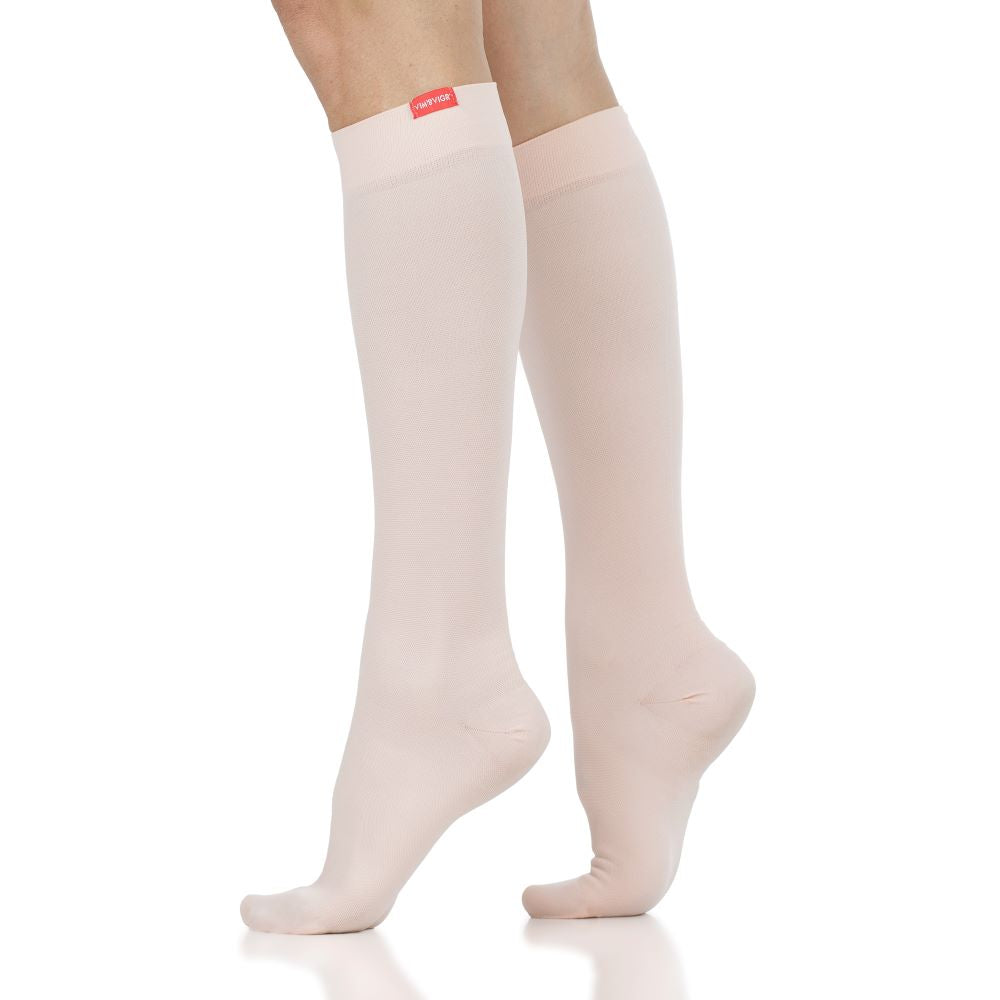How to Choose the Best Compression Ski & Snowboard Socks
Skiing and snowboarding are fantastic hobbies and the highlight of winter for many of us. But how can you keep your toes and feet as warm and comfortable as possible when you’re out on snowy slopes or, even better, on off-piste adventures?
Wearing compression ski and snowboard socks is a great way to energize your lower legs, keep them fresh and pain free, and ensure you stay warm and cozy throughout winter. That’s thanks to the gradual, gentle massage action applied from your ankles up to your knees by graduated compression socks, coupled with choosing the best fabrics for temperature control.
Read on to find out the benefits of compression socks for skiers and snowboarders and to get our tips on finding your ideal socks, including how to wear them and how to care for them to keep them fresh for longer.
What are Compression Ski Socks?
Compression socks apply gentle pressure to your lower legs, which stimulates the blood flow in that area and helps provide a series of benefits. Thanks to the boost in circulation, they ensure that you avoid blood or fluid pooling up in the lower legs. This is particularly a danger for those who are on their feet all day or when you’re likely to spend a long stretch of time in one position without moving (for example, a plane ride).
The benefits of improved blood flow are multifaceted. In the short term, you’ll avoid swollen feet and ankles. Over the longer term, compression can be a beneficial aide when battling certain medical conditions, as well as a very good tool for muscle recovery.
Graduated compression socks like those in the VIM & VIGR collection allow an even better redirection of blood flow, since they’re tighter around the ankles and gradually looser towards the knee. This helps push the blood back up towards the heart, contributing to a healthy circulatory system.
As a bonus, ski or snowboard compression socks are made from warmer, thicker materials, to help keep your feet warm in your ski boots. However, the best ski compression socks are thermoregulating, which means they won’t just warm you up and let your feet sweat in those boots for hours! Merino wool is a great balancing fabric, which keeps feet warm and dry, but also allows sweat to evaporate and prevents the formation of blisters or hot spots during skiing and snowboarding.
The Benefits of Compression Socks for Skiing and Snowboarding
Because they help boost blood flow, high-quality graduated compression socks are great companions on the slopes. They’ll keep your ankles from swelling and will leave you feeling energized and fresh after a whole day on the skis. Moreover, ski compression socks keep you warm, prevent sweating and blisters, and also provide a boost in your recovery from one day to the next.
Better circulation means that your leg muscles are getting the oxygen and nutrients that blood delivers to them, on a continuing basis. Whether it’s your first day on the slopes or you’re a seasoned snowboarder, it’s important to support your muscles, tendons, and joints as much as possible while exercizing. Through the pressure they apply, compression socks do just that - giving you extra comfort, too.
Additionally, once you’re off the board or skis, wearing a pair of compression socks can speed up your recovery. As you hit the après-ski bars, slide on a fresh pair of merino wool socks and let them continue to massage your muscles. This has been shown to prevent post-exercise swelling and discomfort, and to delay the onset of muscle soreness. All the better to hit the snow again early the next morning!
Factors to Consider When Choosing Compression Ski and Snowboard Socks
To make the most of your ski compression socks, you need to make sure they fit you well and that you’ve chosen a material that’s breathable and thermoregulating enough. You also need to understand a little bit about compression levels and what’s best to wear during and after exercise.
Material
The right fabric is maybe one of the most important factors when choosing compression socks for skiing and snowboarding. You’ll spend many hours in a row wearing these socks while your feet and lower legs are stuck in ski boots which - let’s face it! - can often feel uncomfortable (especially for beginners). So, you need a material that’s both comfortable and flexible. But you also need to keep warm, without sweating or overheating.
Many ski and snowboarding socks on the market are made from synthetic materials that risk irritating the skin or fail to keep feet warm or to prevent blisters. Instead, we recommend a versatile warm fabric like merino wool for your next ski holiday. Thanks to the natural fibers and their antibacterial properties, merino wool socks don’t irritate the skin and help keep away odors and bacteria in general.
Merino wool socks are also great for any type of ambient temperature. These thin, supple fibers allow air to travel in between the sock and your feet, wicking away moisture and regulating the temperature so you’re never too cold or too warm either.
Fit
The best compression ski socks are the ones that fit you perfectly. If they’re too loose, they might roll down and create uncomfortable bunches in your boots. If they’re too tight, they’ll cut off your circulation and create more problems.
To ensure best fit, we always recommend measuring the circumference of your calf muscle and follow our sizing guidelines to get the perfect socks.
Style
Whether you go for a merino wool-blend or a different material, it’s also important to consider styling when you pick your next pair of socks. Many people prefer the regular full-length socks which cover their feet and up to their knees. These are also great for sliding in and out of ski and snowboarding boots effortlessly.
However, you may prefer calf sleeves for extra protection, paired with regular warm socks on your winter adventures. You won’t get the compression benefit for your ankles in this case.
Or, if you tend to get really cold legs and your pants don’t quite provide enough support and warmth, you can opt for full-length compression tights or leggings. With these, your entire leg muscles will have the benefit of compression and you’ll also feel a little warmer and better supported overall.
Compression Level
Finally, it’s useful to know that the best ski socks with compression come in various levels of pressure. This means you can have tighter compression ski or snowboarding socks, depending on your preference.
Graduated compression socks are split into:
- Moderate / everyday compression level (15-20 mmHg) - wear a cotton pair of these after your big day out, for ongoing relaxation and recovery;
- Firmer compression level (20-30 mmHg) - for more experienced compression sock wearers, these provide a tighter grasp on the lower legs and can be beneficial during skiing or snowboarding or afterwards, equally;
- Medical grade (30-40 mmHg) - usually prescribed by a doctor, the highest compression level can work really well during recovery from an injury.
The Best Compression Ski and Snowboard Socks
As you prepare to pack for your next ski trip, here are a few suggestions of the best ski socks to take with you.

Everyday recovery compression socks
Opt for some fun patterns and stand out at the bar or when you go out for a coffee in the morning, thanks to moderate compression socks made with cotton. A pair of bison print socks will definitely turn heads while you enjoy the gentle massage on your calf muscles!
Recovery ski and snowboarding socks for the sports fans
After a very long day out, you want to recover as quickly as possible to be able to hit the slopes the next day. After all, most of us get one week of snow fun a year, so we need to pack it all in without spending time worrying about sore muscles.
Start wearing a pair of firmer compression socks in moisture-wick nylon as soon as you’ve taken your post-ski shower. These apply a bit more pressure, so you might only feel comfortable having them on for a few hours before bedtime. They are great for recovery after more intense exercise, however!
All-day warmth and support
As for your daily ski trips, you can’t go wrong with moderate compression and a versatile fabric like merino wool. These ski socks keep your feet warm and dry no matter the weather, while also feeling soft and comfortable. Your ankles won’t swell and you’ll feel like you can keep going all day long.
Tips for Wearing Ski and Snowboard Compression Socks
To feel super comfortable all day on your skis or snowboard, here are some tips from our sporty experts:

How to Care for Compression Ski and Snowboard Socks
To make the most of your socks and keep them for as long as possible, you need to follow a few simple but specific care instructions:
With two or three pairs of ski compression socks, you should be ready to hit the slopes and recover quickly and comfortably in between your days out in the snow. Check out our full catalog here for all the best patterns and styles.



















Leave a comment